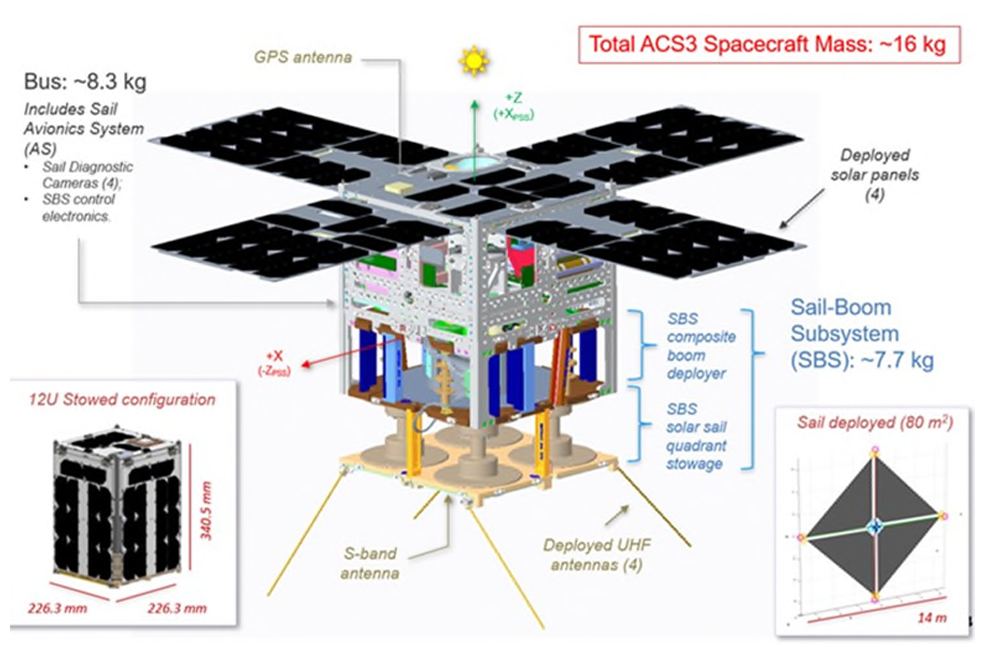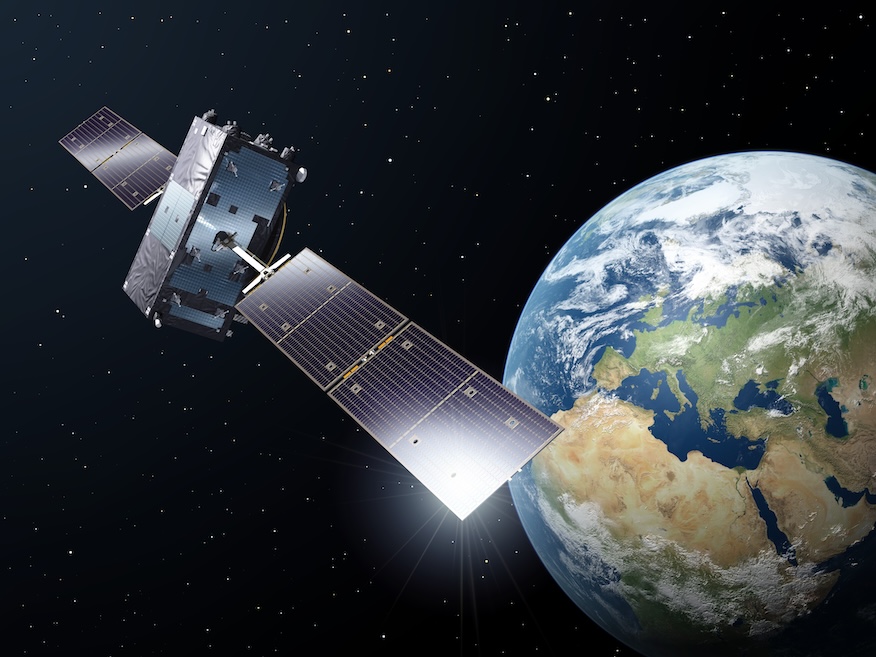[ad_1]
We recently reported on the successful deployment of the solar sail of the Advanced Composite Solar Sail System (ACS3) technology demonstration mission. That huge achievement advances one of the most important technologies available to CubeSats – a different form of propulsion. But getting there wasn’t easy, and back in May, a team of engineers from NASA’s Langley Research Center who worked on ACS3 published a paper detailing the trials and tribulations they went through to prepare the mission for prime time. Let’s take a look at what they learned.
ACS3 was only a technology demonstration mission—it had no science payload to deal with. And that’s a good thing, too, because fitting the solar sail into the housing of a CubeSat was a challenge even without any scientific equipment.
The technology demonstrated was the deployable boom system that created an 81 square meter surface of solar sail to catch the photon particles used to propel the mission forward. That sounds much easier than it was, as is evident from the descriptions of the problems the team had to overcome.
Eventually, the mission launched in a 12U CubeSat configuration, weighing about 16 kg (36 lbs) in total mass. However, the mission was initially prototyped to fit into a 6U configuration—about half the size and weight of the 12U. With the amount of deployable material and the necessary motors to drive their deployment, the engineers couldn’t fit other essential components, like reaction wheels, to steady the CubeSat’s orientation.
However, the 12U design “came with several technical challenges,” according to the paper. One was whether to use four independent spools of material, each tied to an independent boom or one central hub spool with all four booms coiled around a central axis. As was the case with almost all engineering projects, the team’s decision wasn’t based on what was technically best. They decided to use the four independent spools since that required the least modification from the original 6U design.
Another lesson described in the paper was the timing of the launch coordination. Both the “dispenser” (i.e., the system that sends the CubeSats out into space after a successful launch) and the launch contract weren’t submitted until ACS3 was already in testing. By then, modifications had been made to the design, which made it difficult to integrate into an existing dispenser, as the team had modified the edges of the satellite to fit the sails better. But doing so messed up one of the critical touchpoints for standard CubeSat dispensers.
To make matters worse, without a known launch date and inclination, the team had to overengineer many of the CubeSat systems. They had to meet a much wider range of temperatures and shock/vibration environments. But when they finally got their launch date of April 23rd on an Electron rocket from New Zealand, the system had been engineered for an environment much harsher than what it was subjected to, causing increased cost and delays in the delivery.
To meet these challenges, the team took the approach of rapidly prototyping, including developing several different 3D-printed prototypes before finally making the full system out of metal. At one point, a management decision was made not to replace any insert fasteners that were never intended to be used on the final flight but ended up being included anyway because of the cost of replacing them.
Again, these kinds of management decisions are commonplace to anyone involved in an engineering project. However, it’s nice to see that, in this case, it didn’t affect the project’s overall success. Despite some indications that it might be either tumbling or wobbling, ACS3 undoubtedly achieved its primary objective of deploying its solar sail. So, after all the effort and compromises that the team at Langley and elsewhere at NASA put into it, now you just need to look up into the night sky, and you might see the fruits of their labor streaking across it.
Learn More:
Schneider et al. – Advanced Composite Solar Sail System (ACS3): Mechanisms and Lessons Learned from a CubeSat Solar Sail Deployer
UT – NASA’s New Solar Sail Extends Its Booms and Sets Sail
UT – NASA’s Next Solar Sail is About to Go to Space
UT – NASA’s Putting its Solar Sail Through its Paces
Lead Image:
CAD image of the ACS3 spacecraft.
Credit – Schneider et al
[ad_2]
Source link





No comments! Be the first commenter?